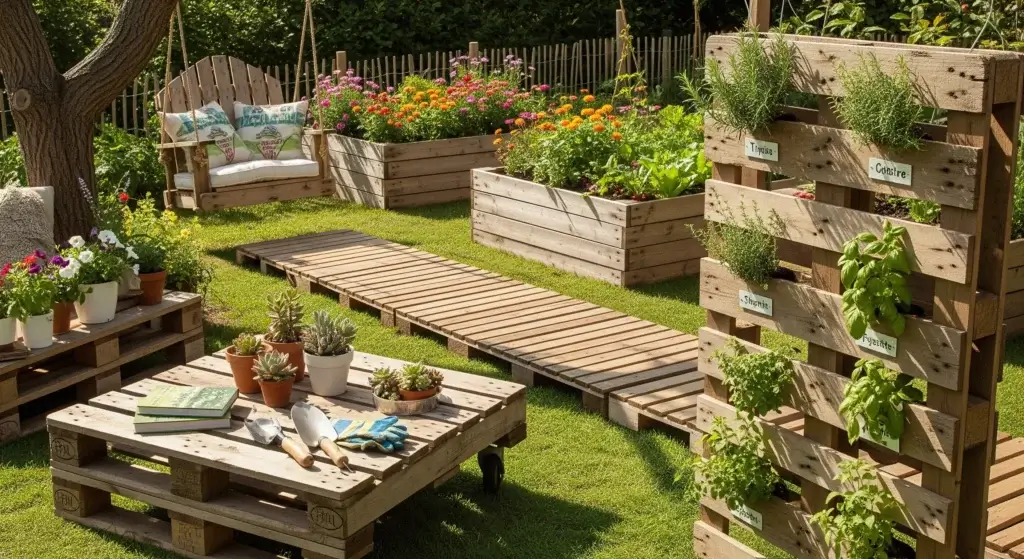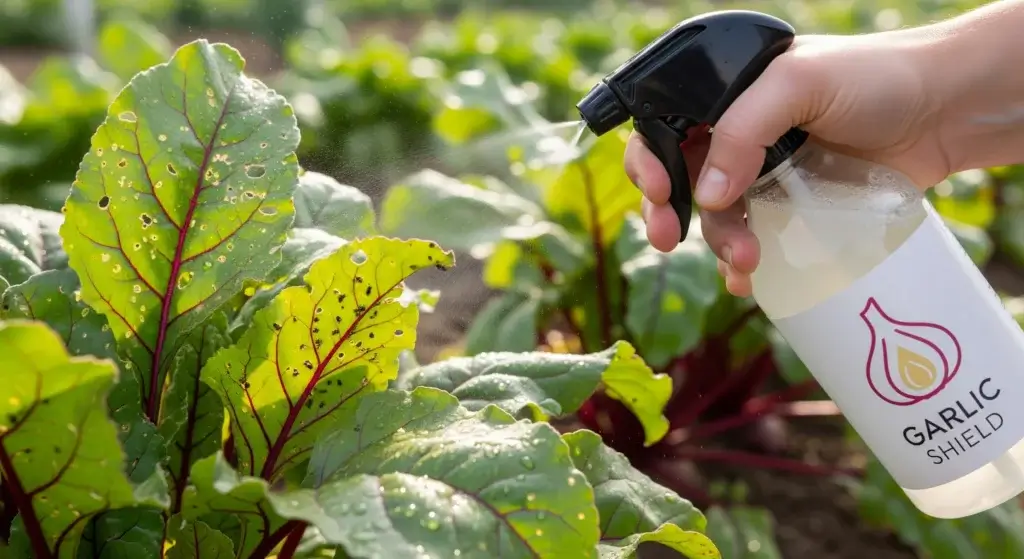
Winter doesn’t have to shut down your garden.
A simple DIY cold frame—basically a mini greenhouse—lets you grow greens, start seedlings early, and protect plants from frost without plugging anything in.
It’s cheap, easy to build, and crazy useful.
Whether you’re overwintering kale or jumping on spring before it’s cool, a cold frame helps you stretch your harvest and garden like a pro—even when it’s chilly out.
Benefits of Building Your Own Cold Frame
Building a cold frame is like giving your garden a cheat code.
You get to grow earlier, harvest later, and protect your plants—all without a fancy greenhouse setup.
Here’s why cold frames are awesome:
Longer growing season
A cold frame adds 4–6 weeks on both ends of your season.
That means spinach in February and seedlings in March—no time travel required.
Save money, grow more
Skip the pricey nursery transplants.
Start your own seeds, grow your own greens in winter, and shave dollars off your grocery bill.
Fresh, homegrown, pesticide-free veg all year? Yes, please.
Weather protection
Spring storms, cold snaps, windy chaos—cold frames shield your plants like a little garden bunker.
Especially useful when you’re starting seeds in late winter and the weather’s acting like a moody teenager.
You can move it around
Unlike greenhouses, cold frames are portable.
You can follow the sun, protect different crops, and flex your setup as the seasons change.
It’s like having a mobile plant fortress.

- Read also: Beat the Frost: DIY Cold Frame For Your Vegetable Garden
- Read also: Crafting Green Havens: DIY Garden Bed Ideas for Every Gardener
Essential Materials and Tools
Building a cold frame is super beginner-friendly—you don’t need a workshop full of tools or contractor-level skills.
If you can measure, drill, and not lose your screws, you’re good to go.
Basic materials
- Wood for the frame: Use cedar if you’re feeling fancy—it lasts longer. Pine works great too and won’t break the bank.
- Screws or corner brackets: Screws are your best bet. Corner brackets help if you’re not a fan of precision carpentry. No shame.
- Hinges + handle: Hinges let you lift the lid like a pro. Add a handle so you’re not awkwardly grabbing the edge every time you want to peek inside.
- Weather stripping: Seal those edges up tight—like tucking your plants in with a warm blanket. It keeps the heat in and the cold out.
For the lid
- Old windows or storm doors: Free, sturdy, and perfect for the job. Windows are light-friendly and often come with hinges already.
- Polycarbonate panels: Great if you’re going new. Super tough, light, and they insulate better than glass. Pricey up front, but they last.
- Glass: Classic choice—great light, but it’s heavy and breaks if you sneeze too hard. Use what you’ve got, but be careful.
Pro tip: Always slope the top from back to front. It helps sunlight hit better and keeps rain from pooling like a sad puddle.
Tools you’ll use
- Saw (to cut the boards)
- Drill or screwdriver (your new best friend)
- Measuring tape and pencil (don’t eyeball it, unless you like rebuilding)
- Outdoor paint or stain (optional, but helps it survive the elements
Simple Window Cold Frame Plan
Got an old window lying around? Perfect. You’re already halfway to building a cold frame.
This is one of the easiest ways to get started—no fancy carpentry, just some measuring, cutting, and screwing things together.
Step 1: Measure your window
Your window sets the size. Measure the width and length to figure out your frame dimensions.
To get the right slope (so rain drains off and the sun hits just right), make the back wall about 6 inches taller than the front.
Step 2: Cut and prep your wood
- Cut the side boards to match the slope between the back and front.
- Sand everything down so you’re not picking splinters out mid-project.
- Use pine or cedar—easy to work with and good in the weather.
Step 3: Build the frame
- Line up the boards and screw them together with corner brackets or wood screws.
- Pre-drill the holes to avoid splitting the wood. You’ll thank yourself later.
- Paint or stain the wood with something weather-resistant—your cold frame’s gonna live outside.
Step 4: Add the window lid
- Attach your window to the back edge using external hinges, so it opens away from you. Easier access, better wind resistance.
- Add a prop rod or chain so you can hold the window open at different angles—your plants like a little fresh air now and then.
Step 5: Place it right
Put your cold frame where it gets maximum sun from the south and is sheltered from cold north winds.
Think of it as your plants’ sun porch. The morning sun is gold, and a little wind protection goes a long way.

Polycarbonate Panel Cold Frame
If you’re ready to level up from the reclaimed window build, polycarbonate is your go-to.
It’s lighter than glass, tough as nails, and insulates like a pro—basically the Kevlar vest of cold frame tops.
Why polycarbonate?
It’s stronger than glass, won’t shatter if a branch falls on it, and keeps heat in better.
Plus, many panels come with UV protection, so they don’t yellow or get brittle over time.
Great for serious gardeners who want a cold frame that lasts more than a couple of seasons.
How to build it
Step 1: Build the frame
Use 1×12 boards for the sides. Slope the back higher than the front for sun and drainage—same deal as before.
Step 2: Make the lid frame
Use 1×3 or 1×4 boards to build a simple rectangular lid that’s a little bigger than the opening. This gives you weather overlap so cold air stays out and heat stays in.
Step 3: Cut and attach the panel
Cut your polycarbonate panel to fit inside the lid frame. Leave a little room around the edges—it expands and contracts with the weather (science!).
Attach it with screws and rubber washers to prevent cracking and keep things watertight.
Step 4: Install hinges
Use sturdy, outdoor-rated hinges and screw them to the back edge of the lid. You want that panel to open away from you so it’s easier to reach inside—and holds up better in the wind.
Step 5: Add a lid 0pener
Feeling fancy? Install a temperature-activated vent opener so it opens when things get too toasty. Want to keep it simple? Use a prop stick or chain to adjust it manually.
Bonus: Insulation boost
Go for double-wall polycarbonate panels or add weather stripping around the edges. That extra layer of insulation can make a big difference in early spring or late fall.
Hay Bale Cold Frame for Temporary Use
Want to try a cold frame without picking up a saw or spending a ton?
Grab some hay bales and an old window, and boom—you’ve got a garden hack that’s warm, easy, and compostable.
How it works
Step 1: Stack your bales
Arrange hay bales in a square or rectangle, tight together so no cold air sneaks in.
Leave a space open on one side so you can get to your plants. Stack a second layer if your crops need more headroom—like a loft apartment for kale.
Step 2: Add a clear top
Use whatever you’ve got: an old window, storm door, even clear plastic.
Lay it across the top, and weigh it down with bricks or bungee cords so it doesn’t fly off when the wind picks up.
Feeling crafty? Add hinges on one side so you can lift the lid instead of wrestling it every time.
Why it’s awesome
- The hay insulates like a boss.
- As it breaks down, it releases heat—free bonus warmth!
- When spring hits, toss the half-rotted bales into your compost or use them as mulch. Your soil gets a boost, no waste involved.
Best for
- Overwintering tender perennials
- Starting early greens before spring fully wakes up
- Renters or anyone not ready to commit to a permanent build
- Organic growers who love a no-waste setup
This setup is basically the hoodie-and-blanket fort of gardening.
It’s cozy, cheap, and surprisingly effective—perfect for testing the cold frame waters without going full DIY mode.

Best Plants for Cold Frame Growing
Not every plant loves the cold, but some totally thrive in it—especially when they’ve got a cold frame to snuggle into.
The trick is choosing crops that like cool temps and can handle a little frost without freaking out.
Leafy greens love the chill
Spinach, kale, lettuce, arugula, bok choy, mizuna—they’re all cold-frame superstars.
In fact, a light frost actually makes them sweeter.
These greens can hang tough down to 20°F with protection, which is basically garden-speak for “they’re built different.”
Root veggies
Carrots, beets, radishes, and turnips don’t mind cold feet.
Plant them in succession and enjoy fresh harvests all winter.
Plus, they get tastier after they’ve been “kissed by the cold.” Nature’s seasoning.
Herbs
Parsley, cilantro, chives, even rosemary can keep growing in a cold frame when everything else has tapped out.
Fresh herbs in winter = extra bragging rights in the kitchen.
Maintenance and Seasonal Care
A cold frame’s like a reliable friend—it does a lot for you, but it needs a little love now and then to keep going strong.
Here’s how to keep yours in good shape, season after season:
Keep that top crystal clear
Dirty lids = sad plants. Dust, grime, or fogged-up panels can block precious sunlight.
- Use regular glass cleaner for windows.
- If you’ve got polycarbonate, go gentle—mild soap and water does the trick.
Clean it now and then, and your plants will keep soaking up those golden rays like sun-deprived housecats.
Check the hardware before it checks out
Cold, wind, and moisture can mess with your hinges and screws.
- Tighten anything loose.
- Lube the hinges (WD-40 is your friend).
- Replace rusted parts before they become a cold-frame fail montage.
Watch for unwanted guests
Cold frames are cozy, and pests know it.
- Peek inside weekly for signs of aphids or freeloaders.
- Yank any infested plants fast.
- Release ladybugs or use a gentle organic spray if things get buggy.
Off-season game plan
Not using it in summer? Don’t let it just sit there.
- Take off the lid and store it somewhere safe so it doesn’t warp or break.
- Use the box as a raised bed—it’s already built and in the perfect spot.

- Read also: Garden Up! Easy DIY Vertical Gardens in Small Spaces
- Read also: Balcony to Farm Fresh: DIY Vegetable Garden on a Balcony
Troubleshooting Common Issues
Even the best cold frames have their off days. If your plants aren’t thriving, don’t panic—most problems have quick fixes.
Here’s how to troubleshoot like a garden pro:
Problem: Overheating
Cold frames can get way too warm on sunny winter days—like a car with the windows up.
Look for: wilting, scorched leaves, or plants bolting way too early.
Fix it:
- Crack the lid earlier in the day.
- Use a stick, prop, or add an automatic vent opener to let heat escape before your spinach turns into soup.
Problem: Standing water or root rot
If the bottom of your cold frame feels like a swamp, your plants will suffer.
Look for: yellowing leaves, mushy roots, mold.
Fix it:
- Add gravel or sand underneath for better drainage.
- Raise the frame slightly.
- Drill a few small drainage holes near the bottom (plants hate soggy feet).
Problem: Frost
Even a tiny draft can let Jack Frost in for a plant-crushing visit.
Look for: frostbite on leaves, limp plants after a cold snap.
Fix it:
- Check all the edges for gaps.
- Use weather stripping, foam tape, or a bit of caulk to seal it up tight.
- Double-check the lid fit—no wiggly corners allowed.
Problem: Plants just aren’t growing
Sometimes it’s not a pest or a disease—it’s just bad lighting.
Look for: pale or leggy plants that look like they’re reaching for a sunbeam that’s not there.
Fix it:
- Clean your lid (dirt, dust, or condensation can block a lot of light).
- Make sure your frame faces south and isn’t sitting in the shadow of your shed, fence, or overly enthusiastic hedge.
Cold Frames: Small Build, Big Payoff
Building a cold frame is an easy way to stretch your growing season without fancy tools or a huge budget.
Whether you go with an old window, polycarbonate panels, or hay bales, it’s a smart step into year-round gardening.
You’ll get more than just winter veggies—cold frames teach you how to work with nature, not against it.
Plus, they save money, boost your skills, and make your garden feel way more productive.
Start simple with what you’ve got. As you grow (literally), tweak your setup, build a second one, or go full garden nerd.
The effort pays off in fresh food, less waste, and the bragging rights of harvesting greens in January.



